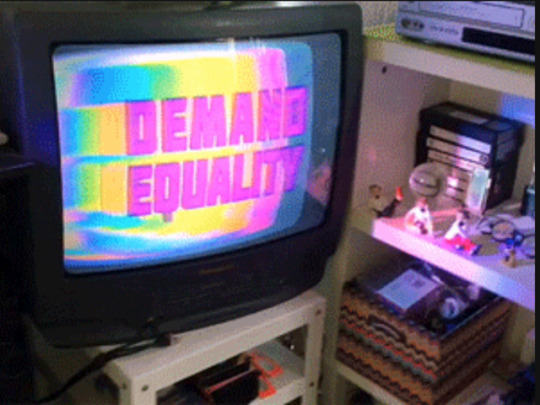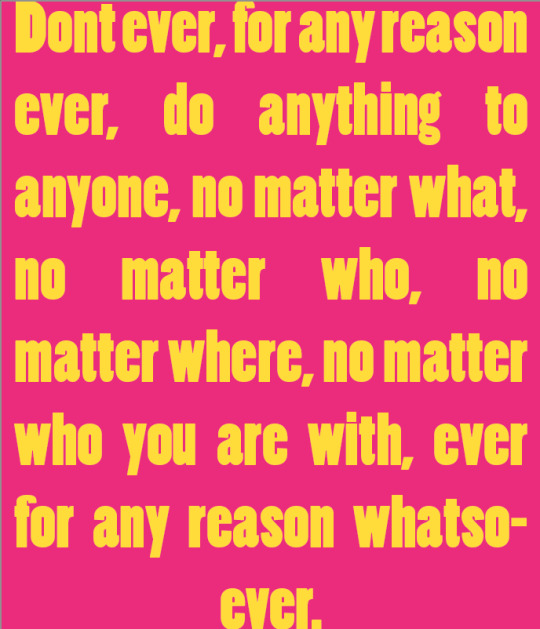Photo

The term, “It is the world that disables a body, not a body that is disabled.” is a very powerful one and really framed the way I began to think about this topic. When our society already has preconceived notions about what people with disabilities can or cannot do, it creates a setting in which basic tasks seem to be “extraordinary”. I believe that disabled people have a much harder time adjusting to society because of this. After going through these readings, I realize that I used to be one of those people. I never thought about how this type of thinking could be offensive to people. But like Stella Young said, “I am not your inspiration.” This view point allows for different types of normal, which is very important.
Alison Kafer makes some great points about companies and unequal opportunities. Lots of companies have opportunities for the disabled but they just aren't active enough to include everyone. Like many of the examples in the readings, the most common representations of people with disabilities are that of inspiration to “able” people. We see this representation of disability all over the media, whether that be TV, movies or on social media. Some movies that don’t to the best job representing disability include Glee and Avatar.
“Invisible disability” refers to a disability that is not outwardly apparent. This is challenging because most people might assume everything about that person is “normal” just by going by their looks. The dissonance caused by their inconspicuous appearance and invisible disability might make it difficult for people to be understanding. My little sister has an invisible disability when it comes to learning and social skills, and she has always struggled because a lot of people didn't understand her. Invisible or not, it’s important that we don’t impose constraints on those with disabilities. No one is perfect, we have no right to judge and no one should be treated as a burden.
0 notes
Photo

It is important to see representation of who you are in everyday life, and everyone should be defined equally in our society and through the media. This is what the phrase “representation matters” means to me. It is essential that every culture, gender and race is represented so that our society has realistic expectations when it comes to what should be considered the new norm. The acknowledgement of groups of people, cultures, and oppressed voices deserve to be heard and paid attention to. When practicing this, it becomes much easier to mitigate the creation or perpetration of stereotypes.
One problem in PVMC today is the lack of proper representation of different races and culture. I most commonly see PVMC sources featuring white, heterosexual individuals as the leading role. The “right” way to approach representation is to equally include different groups of people into the media to show the realistic and diverse aspect of our world. Representation is an important but tricky subject and can sometimes cause harm, as seen in the critique of Lee Daniels. A common problem thats seen when representing a specific group of people is the chance of casting them in a negative way. In order to create a space where an unrepresented group is properly defined in the media, it’s important to showcase their concrete contributions rather than shaming them for causing harm. This concept is explored in the Lee Daniels article. Shining a positive light on these groups in the media is key. Representing a collective group in a negative way only furthers them from becoming included in our society.
A good example of positive representation of sexuality in the media would be The Ellen Show. Not only has Ellen used fame as a platform to encourage human compassion and support, she promotes an honest and accepting attitude when it comes to all forms of sexuality. She also does a great job normalizing the concept by adding humor.
When watching the documentary A Jihad for Love, I was very taken aback by the fact that some people still view being gay as struggling “to strive in the path of God.” In Muslim culture, these two concepts are strongly linked which upsets me because it’s not like being gay can be “fixed” or “changed”. Most representation of sexuality in PVMC is centered on western whiteness, A Jihad for Love challenged this by focusing on the stories of men from a Muslim community. This documentary was refreshing to watch and shows just how important it is for our media to start representing different cultures in PVMC.
A Jihad for Love tries to mitigate countless assumptions about religion and sexuality, especially in terms of faith. The film shows that just because these Muslim men are gay, that doesn’t mean they are attempting to go against God. Religion doesn’t have to follow a strict rule book, especially when it’s such a personal subject. This documentary did a great job showcasing different people in other cultures and shows how religion can evolve.
0 notes
Photo

It is important to see representation of who you are in everyday life, and everyone should be defined equally in our society and through the media. This is what the phrase “representation matters” means to me. It is essential that every culture, gender and race is represented so that our society has realistic expectations when it comes to what should be considered the new norm. The acknowledgement of groups of people, cultures, and oppressed voices deserve to be heard and paid attention to. When practicing this, it becomes much easier to mitigate the creation or perpetration of stereotypes.
One problem in PVMC today is the lack of proper representation of different races and culture as I most commonly see PVMC sources featuring white, heterosexual individuals. The “right” way to approach representation is to equally include different groups of people into the media to show the realistic and diverse aspect of our world. Representation is an important but tricky subject and can sometimes cause harm, as seen in the critique of Lee Daniels. A common problem that’s seen when representing a specific group of people is the chance of casting them in a negative way. In order to create a space where an unrepresented group is properly defined in the media, it’s important to showcase their concrete contributions rather than shaming them for causing harm. This concept is explored in the Lee Daniels article. Shining a positive light on these groups in the media is key. Representing a collective group in a negative way only furthers them from becoming included in our society.
A good example of positive representation of sexuality in the media would be The Ellen Show. Not only has Ellen used fame as a platform to encourage human compassion and support, she promotes an honest and accepting attitude when it comes to all forms of sexuality. She also does a great job normalizing the concept by adding humor.
When watching the documentary A Jihad for Love, I was very taken aback by the fact that some people still view being gay as struggling “to strive in the path of God.” In Muslim culture, these two concepts are strongly linked which upsets me because it’s not like being gay can be “fixed” or “changed”. Most representation of sexuality in PVMC is centered on western whiteness, A Jihad for Love challenged this by focusing on the stories of men from a Muslim community. This documentary was refreshing to watch and shows just how important it is for our media to start representing different cultures in PVMC.
A Jihad for Love tries to mitigate countless assumptions about religion and sexuality, especially in terms of faith. The film shows that just because these Muslim men are gay, that doesn’t mean they are attempting to go against God. Religion doesn’t have to follow a strict rule book, especially when it’s such a personal subject. This documentary did a great job showcasing different people in other cultures and shows how religion can evolve.
0 notes


























